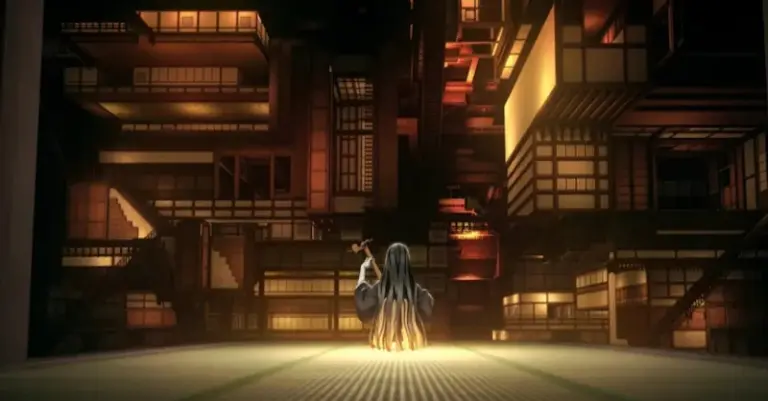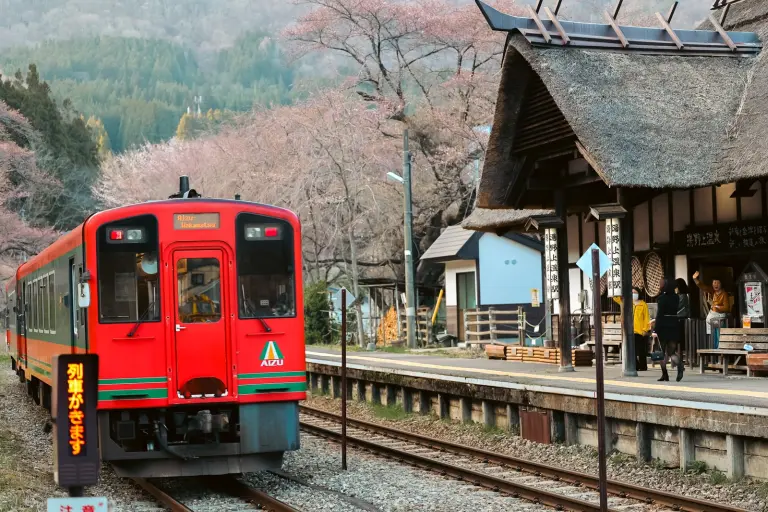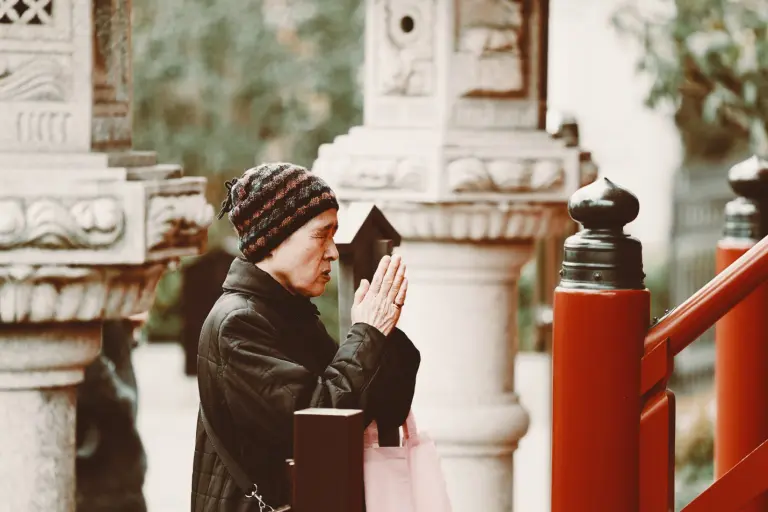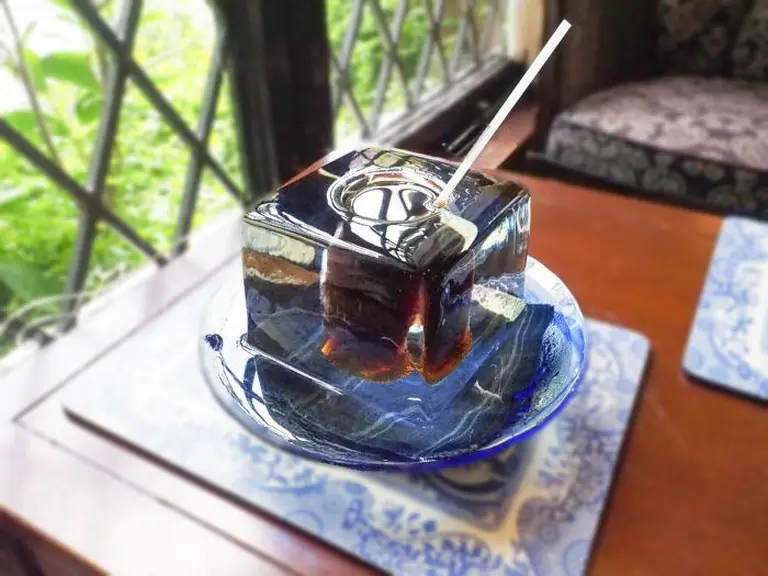In Japan, osechi ryori is a special multi-tiered bento box prepared and enjoyed during the New Year (Oshogatsu) as part of traditional celebrations.
While many countries ring in the new year with parties and fireworks, Japan’s observance is more tranquil. One central element is osechi ryori — an assortment of symbolic dishes served in exquisite lacquered boxes called jubako over the first three days of the year.
Origins of Osechi ryori
The tradition began during the Nara period (710–794), when offerings called sechinichi were made to the deities. Over time, these offerings evolved into refined banquet-style dishes, especially during the Heian era (794–1185). During the Edo period (1603–1868), osechi gradually spread beyond the aristocracy to become a beloved custom among all classes.
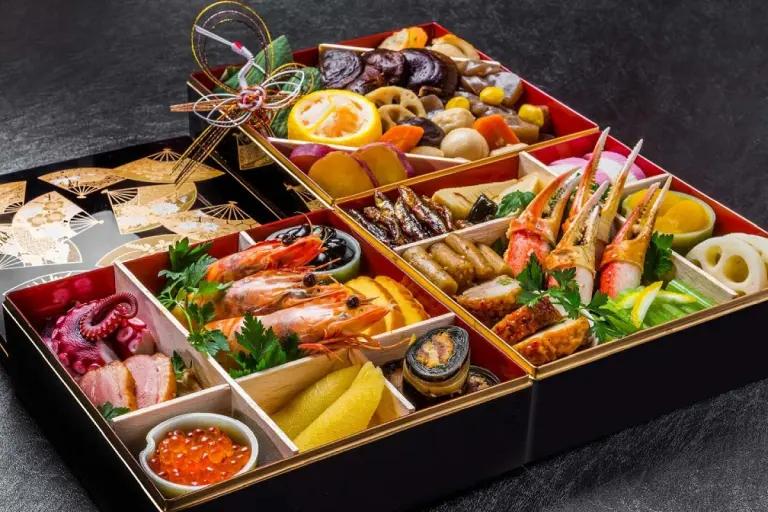
Today, osechi ryori comprises many small portions of foods arranged artfully within stacked lacquer boxes — similar in concept to a bento, but far more elaborate and ceremonial.
Because the dishes are often sweet, sour, or pickled, they can be preserved without refrigeration, allowing the boxes to last through the first three days of the year. The tradition of preparing them in advance also ensures that families don’t have to cook during the New Year period — conveniently allowing everyone to rest and spend time together.
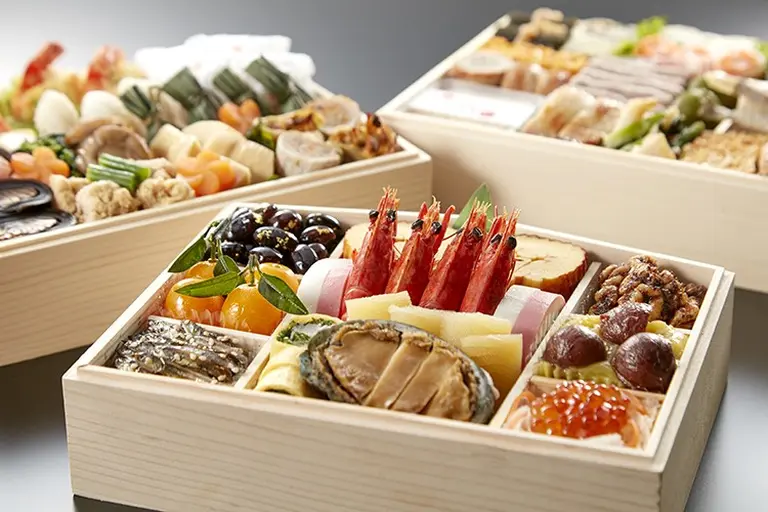
>> What do Japanese people eat at Christmas? The answer may surprise you
Symbolism in the Box
Every item in an osechi box carries symbolic meaning, intended to bring good fortune, health, prosperity, or longevity in the coming year. Some commonly included foods and their associations are:
- Kazunoko (herring roe): fertility and abundance
- Kurikinton (sweet chestnuts): wealth and prosperity
- Datemaki (rolled sweet omelet): knowledge and learning
- Tazukuri (candied sardines): a bountiful harvest
- Kamaboko (fish cakes): shaped like the rising sun, symbolizing joy and success
- Ebi (shrimp): long life
- Tai (sea bream): good fortune
- Kombu (seaweed): happiness and harmonious relationships
- Mochi (rice cakes): reunion and luck
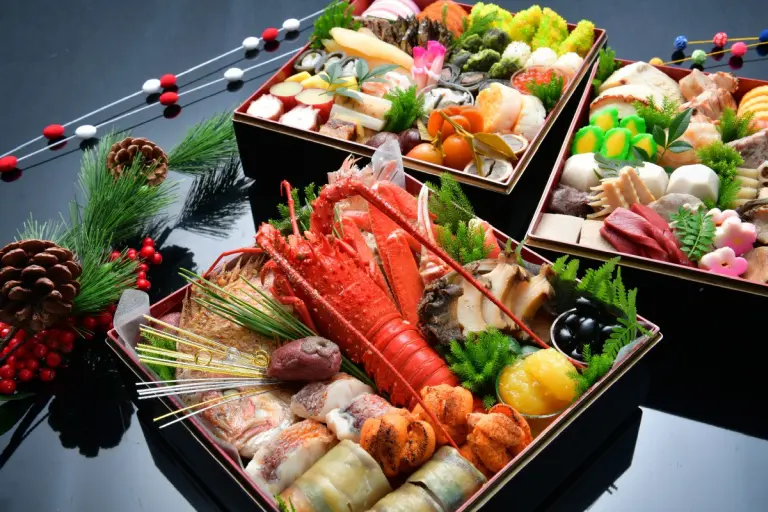
Modern Adaptations
Because making osechi from scratch is labor-intensive, many people now pre-order these boxes from restaurants, convenience stores, or hotels.
Depending on the number of dishes and the level of craftsmanship, a single osechi set can cost anywhere from USD 1,000 to 2,000.
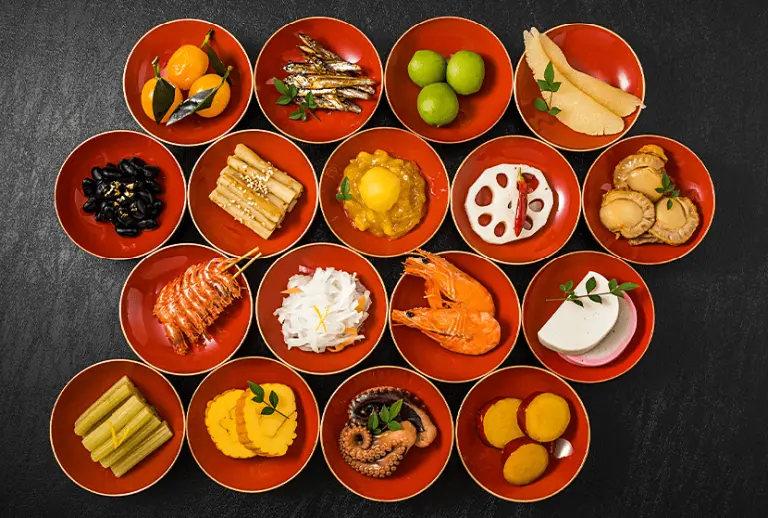
>> Four types of meat in Japan named after Cherry Blossoms, Peonies, Maple Leaves, and Oak Trees
For visitors to Japan, osechi ryori is more than just a meal — it’s an invitation to experience the country’s New Year traditions through taste, symbolism, and artistry. Whether enjoyed at a traditional inn, a restaurant, or even as a ready-made box, it offers a meaningful glimpse into Japanese culture and the values carried into the new year.

